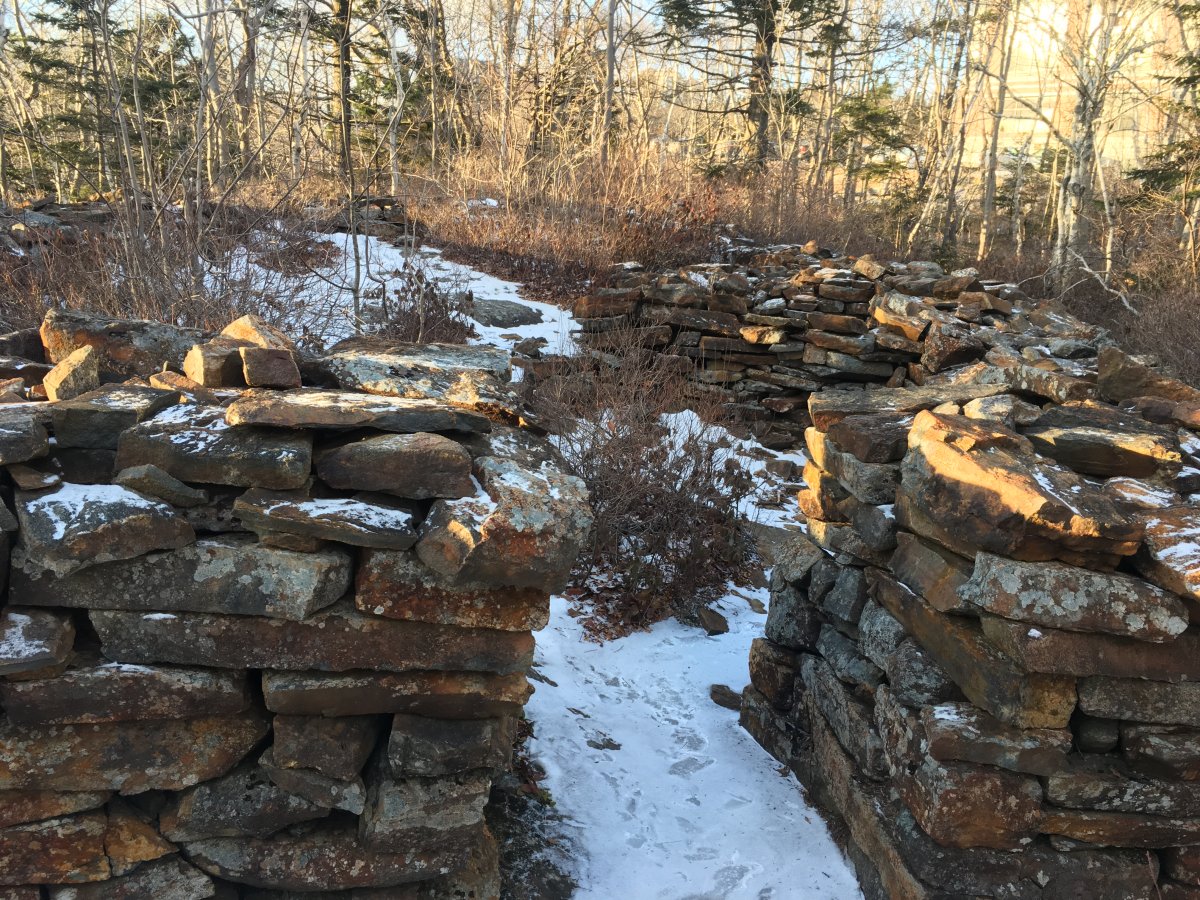The Nova Scotia Archaeology Society has completed a new study on the renowned Bayers Lake Mystery Walls and concluded that their purpose and origin remain, for the time being, a mystery.

The undated stone structure lies just outside Halifax city centre in the woods by the Bayers Lake shopping area and has long puzzled local academics and history buffs. The rocks form the remains of a five-sided structure, which was reported publicly for the first time in 1990 and has been studied and surveyed ever since.
READ MORE: Dartmouth history unearthed in archaeological dig for canal project
The archaeology society recently tested the soil around the walls for chemicals that would indicate it was used as a pen to keep animals, but found no evidence to support that theory.
“It’s an example of negative evidence, I suppose,” Saint Mary’s University archaeologist Jonathan Fowler told Global News after publicly presenting the findings at a lecture on Tuesday evening.
Other theories for the walls include a domestic structure of some sort or a military construction of the 18th or early 20th century. But each of those theories presents some evidential challenge, Fowler explained — namely a lack of artifacts left behind by whomever used the walls.

Get daily National news
“I think the situation and the landscape does suggest some kind of informal military work — that is, if it’s not an agricultural site,” he said. “The one challenge to the agricultural site that is really tough is that the landscape is just so harsh.”
There are no official military records of the site’s existence, Fowler added, adding to his belief that it might have been an informal structure of some kind. It doesn’t conform to known styles of military fortress building in the 18th century, he explained, and analysis of the glass, cans and .303 bullet casings that were retrieved from the site by researchers is ongoing.
“Sometimes, sites like this are never fully resolved, and that’s just the nature of the business and it’s unfortunate,” said Fowler.
WATCH: Dinosaurs: Unearthed comes to Halifax

For the time being, the Nova Scotia Archaeology Society doesn’t put much stock in the domestic structure theory, as the mystery walls lack evidence of a chimney, a superstructure and domestic debris. The negative soil chemistry test also doesn’t add weight to the animal husbandry theory, when combined with the site’s terrain, which is tough for animals like sheep to traverse and doesn’t have many food sources.
Fowler said the society will now regroup and come up with a new angle of study, using new radar surveying technology and contributions of information and ideas from the public. It’s also seeking to expand its membership in 2019.
READ MORE: Architect of Toronto mystery tunnel revealed






Comments